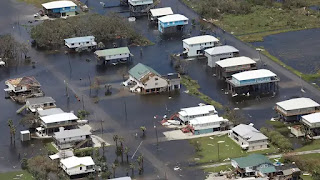Mitigating Extreme Weather Risks: Disaster Insurance for American Homeowners
Introduction Extreme weather events are becoming more frequent and severe, posing significant risks to homeowners across the United States. From wildfires and hurricanes to floods and tornadoes, the threat of natural disasters looms large. While homeowners insurance provides essential coverage, it often falls short when it comes to extreme weather events. In this article, we explore the importance of disaster insurance for American homeowners and how it can help mitigate the financial impact of such events. Understanding Homeowners Insurance
Homeowners insurance is a standard policy that covers damage to a home's structure and personal belongings. It also provides liability coverage in case someone is injured on the property. While homeowners insurance is crucial, it typically excludes coverage for many natural disasters.
The Gap in Coverage
Many homeowners are shocked to discover that their standard homeowners insurance does not cover damage caused by certain extreme weather events. For instance:
- Floods: Homeowners insurance usually excludes coverage for flood damage. Flood insurance, which is separate, is often required for homes located in flood-prone areas.
- Earthquakes: Earthquake coverage is typically not included in standard policies. Homeowners in earthquake-prone regions need to purchase separate earthquake insurance.
- Wildfires: While some wildfire damage may be covered, high-risk areas may require additional coverage or come with high deductibles.
- Hurricanes and Tornadoes: Wind damage from hurricanes and tornadoes is usually covered, but there may be separate deductibles for these events.
- Earthquakes: Earthquake coverage is typically not included in standard policies. Homeowners in earthquake-prone regions need to purchase separate earthquake insurance.
- Wildfires: While some wildfire damage may be covered, high-risk areas may require additional coverage or come with high deductibles.
- Hurricanes and Tornadoes: Wind damage from hurricanes and tornadoes is usually covered, but there may be separate deductibles for these events.
Disaster insurance, often referred to as "catastrophic" or "natural disaster" insurance, fills the gap left by homeowners insurance. It provides coverage for damage caused by extreme weather events, including those not covered by standard policies.
- Assess Your Risk: Evaluate the specific natural disaster risks in your area. This can help you determine the type and amount of disaster insurance you need.
- Flood Insurance: If you live in a flood-prone area, flood insurance is a must. It is available through the National Flood Insurance Program (NFIP) or private insurers.
- Earthquake Insurance: If you reside in an earthquake-prone region, consider earthquake insurance to protect your home and belongings.
- Wildfire Coverage: For homeowners in wildfire-prone areas, inquire about additional coverage or endorsements that can help protect your property.
- Hurricane and Tornado Preparedness: Review your homeowners insurance policy to understand how wind damage from hurricanes and tornadoes is covered. Consider additional coverage if needed.
- Financial Protection: Disaster insurance provides financial protection when you need it most. It can cover the cost of rebuilding your home, replacing personal belongings, and covering temporary living expenses.
- Government Assistance: Depending on the scale of the disaster, government assistance may be available. However, it is not a reliable substitute for adequate insurance coverage.
